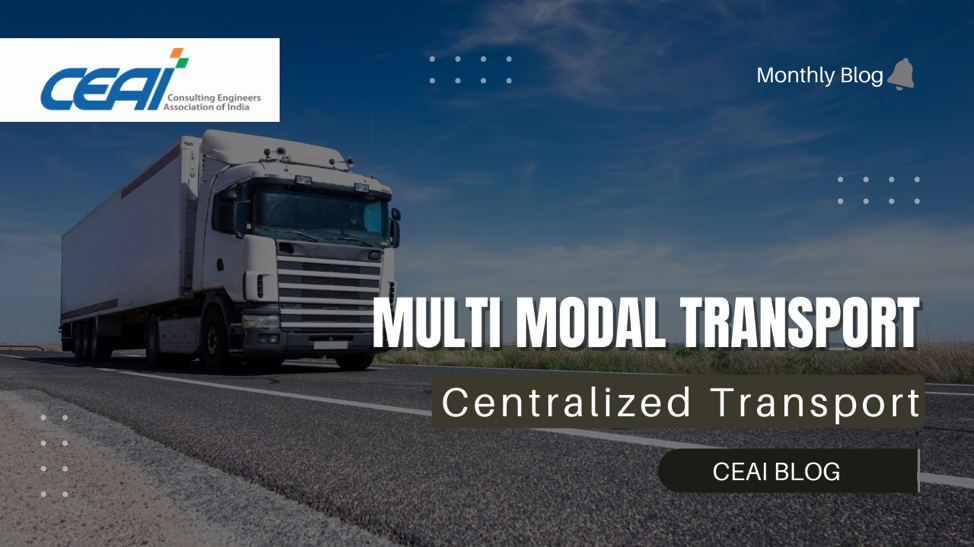
Multi-Modal Transport

Industries and businesses have been and still are heavily reliant on transport services. This was highlighted even more during the pandemic when the mobility of goods, as well as the mobility of individuals, was minimal. The dependency of industries on the transport industry showcases the need for this industry to be extremely efficient. To live up to this need for efficient transportation, we have Multi-Modal Transport. It is a mode of transportation wherein multiple vehicles are used as a medium for the goods to reach their destination. It comes up with the most efficient combination of routes and mediums for the delivery to come into effect.
When it comes to delivery of raw materials to factories or delivery of end products to the shops or customers there is a need for more than one vehicle. For example, the raw material may be brought into the vicinity via train and then further sent out to different factories for processing the same in trucks. Multi-Modal Transportation also refers to the logistics and freight procedures of different modes of transportation. To further explain this with an example, consider a shipment brought in via air. So it involves air cargo freight. And it was taken ahead for delivery via road, so there will be truck carrier charges.
Multimodal Transportation is carried out by a single carrier who is called “Multimodal Transport Operator / Provider”. The industries and the provider have a single contract and the provider arranges a network of small contractors to deliver the goods. It is hence convenient for the industries and helps them get rid of the hassle of multiple contracts and tracking the goods with each contractor.

Advantages of Multimodal transportation:
Centralization of Responsibility:
Multimodal transportation helps in coordination as it is better than intermodal movement in terms of clearer communication. Coordination with multiple carriers often leads to the decrease in efficiency as talking to even one carrier company or service is enough to make freight logistics complicated. This also leads to loading and shipment delays. Hence, the companies are preferring a single contract for better overall control of transit and less contracts-related work. This centralization also helps in the carrier management and sourcing which has been enhancing the services and thus increasing the demand for multimodal transport in recent years.
Increased Security for Transportation:
The complex transportation infrastructures have created the potential for wide-scale disruption of global supply chains. Moreover, problems in managing a supply chain can be related to tracking, delays, and wasted resources. The contractual obligations in a multimodal movement mean that only one agent or service provider is responsible for the movement of the freight. Having this one agent or service provider responsible for the freight means that the shipment is secured by one company and thus reduces the risk associated with the process.
Better Accessibility
Every mode of transportation has its own limitations. While the airways are the fastest, they can carry limited weight, on the other hand, seaways can carry goods in bulk. This being said, neither of the two can provide door-to-door service like road transportation. This is why a combination of all through multimodal transport systems can enable the cargo to reach its final destination without any constraints or limitations.
It also provides a consolidated headcount which is often unavailable through a decentralized team. This allows the operations team to reassign resources to other areas of need.

Challenges faced in the Multimodal transportation:
The excessive paperwork in multimodal transportation has been bothersome for some consumers. The company or service providers send invoices for different services like each leg of transportation. The processing time for each paper invoice is a lot and the overall shipping cost also keeps growing. Hence, the transport and logistics industry is making efforts to go paperless by using paperless delivery management systems that support e-sign and photo proof of delivery.
Another challenge faced by the industry is poor tracking & coordination. Tracking a single shipment in long-haul freight can require a number of resources even when transportation is given to one shipper and one carrier. Thus, there is a constant need for updates. The automatic shipment notifications and track and trace have been helping multimodal transportation services to solve this issue.
Sometimes lack of skilled logistics personnel, low integration between network partners, and inadequate and ineffective capacity of trucks create issues in this mode of transport as well. Well-planned logistical management has been helping the companies in this industry tackle these issues.
Conclusion:
Hence, the Companies and businesses are using multimodal transportation due to its considerable advantages and because it is a win-win for the carriers and the customers. The simplicity of the contracts and cargo flexibility are further boosting its demand globally.
